5. Bob Saginowski in “The Drop” (2014)
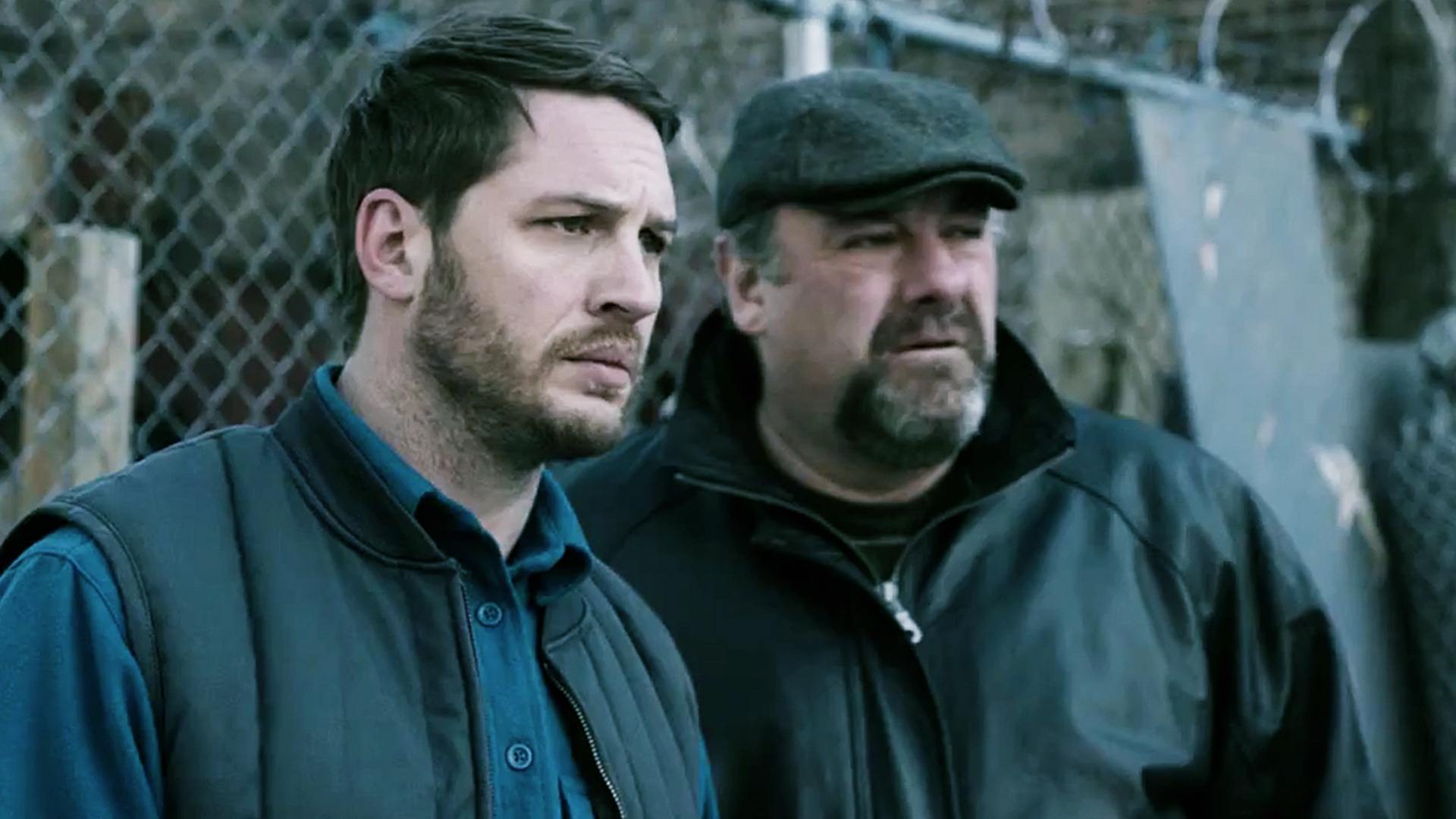
In this film, Hardy plays the quietly dangerous Bob Saginowski. In the previous year, in “Locke”, Hardy’s performance coiled a confident carapace around a black hole of insecurity. With The Drop’s shadow-dwelling Bob, Hardy inverts that formula, crafting a similarly fascinating performance out of a quiet young man whose seeming diffidence masks a far darker core than almost anybody around him would guess.
Bob serves drinks at what used to be his cousin Marv’s bar. Although his name still hangs over the door, Marv (James Gandolfini) sold out years ago to the local Chechen mob. Now the Chechens use the place as a “drop bar” for stashing envelopes of cash and Bob and Marv both make a point of always looking the other way.
This doesn’t bother Bob so much, as he just wants to get his work done and be left alone. He lives alone in his dead parents’ mausoleum-like house where the furniture is covered in plastic sheeting and most of the lights stay off. Bob is so retiring that half of his conversation consists of drawling, “Yeah…” and looking off into the middle distance. You get the sense watching Bob that he could easily wear a groove in the sidewalk between Marv’s bar and his house for the next 30 years without missing a beat.
Tracking the slow escalation of Bob’s tension is the most worthwhile aspect of The Drop. Hardy displays an uncanny ability to tease out the smallest evolutions in his character’s growing unease. His slow build-up to an inevitable-seeming detonation is repeatedly affecting.
That Bob dutifully attends Mass every morning but abstains from taking communion is an early clue that there’s more to this gruff but likable heavy than meets the eye. Whatever it may be, Hardy does a fine job of keeping the audience guessing: All we can assume is that he’s been scarred by some distant trauma
Slapping on a persuasive New York accent and eliminating all traces of the suavity he’s displayed elsewhere, Hardy is so good here that it almost doesn’t matter that Bob feels like a somewhat hollow construct in the end, engineered to stir the audience’s compassion and their bloodlust simultaneously.
Hardy’s skillfully restrained performance isn’t just the film’s strongest element; it’s the reason this serviceably constructed thriller remains as absorbing as it does, despite a succession of ham-fisted plot turns and goombah stereotypes.
4. Michael Gordon Peterson in “Bronson” (2008)
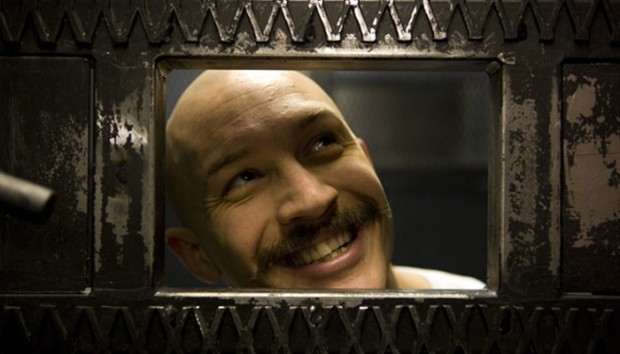
Hardy made his name with two performances which showcased his remarkable physical versatility and skill as an actor. First he shrank to nothing to portray Stuart Shorter – a homeless man who suffered from muscular dystrophy and a desperate drug habit – in the TV adaptation of the award-winning book “Stuart: A Life Backwards in 2007”.
He then gained thirty-five pounds in five weeks to play Britain’s most notorious prisoner, Charles Bronson, for the 2009 arthouse film “Bronson”, which sparked a tabloid outrage for glorifying a violent criminal.
If there is no other reason to see this most British of films, one must see it for Tom Hardy’s portrayal of the mad man often referred to as Britain’s most notoriously dangerous criminal. Knowing that Hardy spent his teens and early twenties battling delinquency, alcoholism and drug addiction, one gets the frightening impression Hardy is most “at home” in “Bronson”.
Narrated eerily throughout by Bronson/Hardy with humor, the film often blurs the line between comedy and horror. “Bronson” is a fictionalized account of the life of the career criminal, Michael Gordon Peterson, born by that name in 1952, but later changing his name several times.
In 1974, Peterson decided he wanted to make a name for himself and so, with a sawed-off shotgun, he attempted to rob a post office. Swiftly apprehended and originally sentenced to seven years in jail, Peterson would spend the next thirty-four years behind bars, thirty of which were spent in solitary confinement. During that time, Michael Petersen, the boy, faded away and “Charles Bronson”, his superstar alter ego, took center stage.
The word from the real Charlie Bronson was that he was very impressed by Hardy, his physical transformation as well as his portrayal of the violent criminal, saying he believed Hardy to look more like him that himself.
3. Ivan Locke in “Locke” (2013)
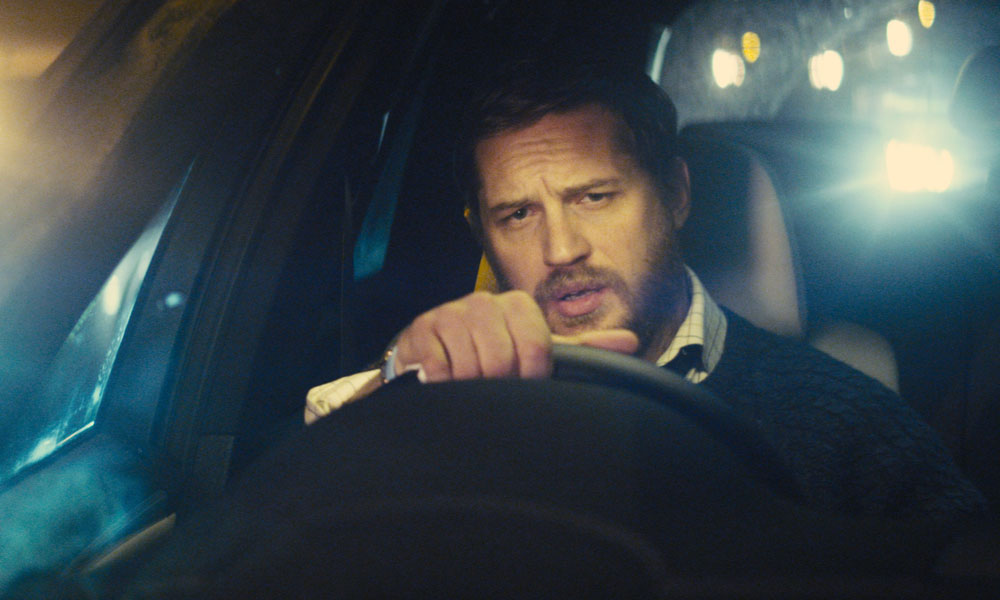
Ivan Locke has worked diligently to craft the life he has envisioned, dedicating himself to the job that he loves and the family he adores. On the eve of the biggest challenge of his career, Ivan receives a phone call that sets in motion a series of events that will unravel his family, job, and soul. All taking place over the course of one absolutely riveting car ride, “Locke” is an exploration of how one decision can lead to the complete collapse of a life.
Locke has a very simple premise. So simple, it would lead you to believe that it’s a very dull and uninteresting affair. It basically consists of spending over an hour stuck in a car with a man who does nothing more than talk to people on his hands-free device while driving from Birmingham to London and talking through his personal problems. However, it’s anything but dull. In fact, the very simplicity of writer/director Steven Knight’s approach is what makes the film so compelling.
Hardy talks a lot. A lot about his work in concrete; building development and laying foundations but the real development and foundations are built from his emotionally charged character.
Set entirely within the confines of his moving vehicle, the real driving force behind the narrative is the dialogue. It methodically peels back the layers of one man’s quest to right a wrong in his life and Hardy’s expressive mannerisms completely own the screen.
Granted, he’s the only person who actually appears onscreen (the rest literally phone in their roles) but that’s not to take away from his exceptional and spellbinding performance. What is more impressive is the fact that Hardy performed the entire film not knowing a single word of the script. He literally read every word from an autocue (teleprompter). Filming was performed in less than a week. Hardy prepared for the role by spending a week at the home of a Welsh friend in order to emulate Locke’s accent.
For a film that’s constantly on the move, it’s actually deeply rooted in character development. Ivan’s goals, achievements and morals are teased out with every conversation he’s involved in and Hardy’s emotion and nuance lends a captivating intensity to the overall mood and atmosphere.
A claustrophobic chamber piece that defies the big spending studios by delivering something personal and intimate without digging too deeply into it’s pockets. It’s more like a one-man play than a film and a great example of how less can be more.
2. Reggie and Ronnie Kray in “Legend” (2015)
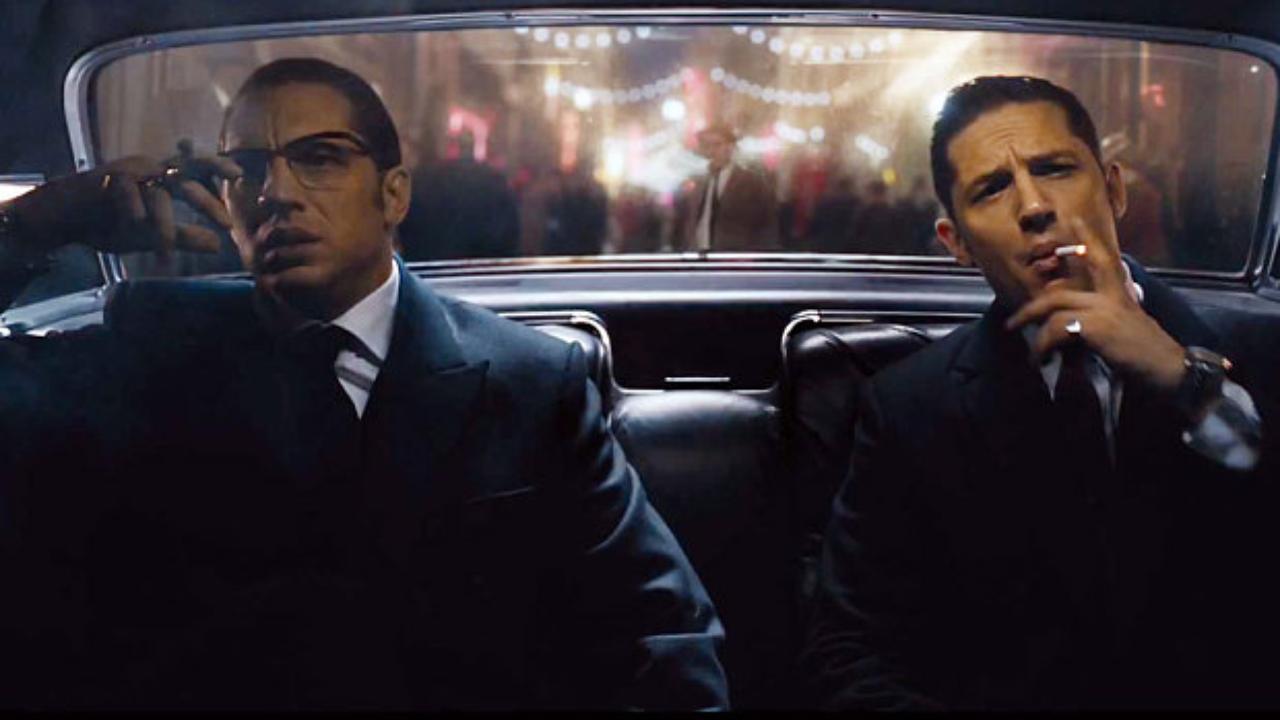
It’s difficult to say anything was disappointing about “Mad Max: Fury Road,” but there was a slight twinge when it became apparent that, even though the great Tom Hardy plays the title role, it wasn’t really his movie. One cannot make the same complaint about “Legend,” Brian Helgeland’s film about real-life twin mobsters Reggie and Ronnie Kray – Hardy plays both of them.
When it seemed that Hardy had reached his limits of versatility, he defies belief yet again in his brilliant performances as the legendary Kray twins, the mobsters who rose to power in 1960s London. Tom Hardy’s, transformation into both brothers is nothing short of miraculous. It’s not just critics who seem to think that way, either.
One of the Kray’s longtime associates, a hit man named Freddie “Brown Bread Fred” Foreman, was completely stunned when he saw the British actor in character as Ronnie. And none other than legendary boxing coach Freddie Roach, who was brought in to help Hardy prepare to play the brothers—both of whom had amateur boxing backgrounds—was so impressed by the star’s skills that he told reporters that “he could step in the ring for real.”
The problem is that this well-constructed setting and these magnificently modulated performances are missing a story that lives up to the movie’s title. The film follows multiple threads simultaneously, but fails to weave them into any kind of satisfying or illuminating whole. “Legend” is partly about how Reggie seduced his wife Frances (played by Emily Browning), who also serves as the film’s narrator, describing from the inside how the Krays’ bad boy luster dulled after endless days of bickering and broken promises.
It’s also about how the brothers crushed their competition and drew interest from American syndicates, who offered to expand their business globally and make them more legit. The themes here are all well worn, primarily exploring how an ambitious gangster’s plans for a better life keep getting undone by the volatility of his business associates.
It’s hard to imagine though how any of this would go over without Hardy, who convincingly embodies both sides of Legend’s dialectic. As Reggie, he’s a suave operator with impeccable manners, who understands the importance of public relations but still isn’t opposed to settling disputes with his fists—or by turning loose his hammer-wielding psychotic brother.
And as Ronnie, he’s a surprisingly eloquent thug who makes the case that people shouldn’t hate who they are—and then lives his principles by being openly gay and openly criminal. When the two Krays are in the same room, circling each other with a mix of fraternal affection and deep loathing, Legend is as heady and unforgettable as it means to be.
1. Tommy Riordan Conlon in “Warrior” (2011)
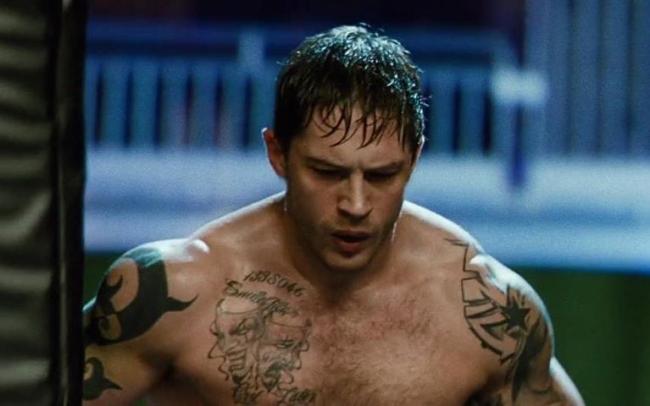
Well-made sports films are constant reminders of how an inspiring tale can be the ultimate uplifting experience, especially if an underdog is somehow weaved into the mix. Boxing films however, are the most introspective of the bunch. Inner turmoil and family hardships always play a part outside of the ring, and often prove to be the biggest opponents over which to prevail.
“Warrior” fits into this formulaic description a little too flawlessly, encompassing every struggle imaginable for the fighters as if they were being dotted off a checklist. But it manages to use these cliches as a proving ground for the two leads who fight to become better individuals.
The film’s plot design is equally ingenious when it comes to updating a recycled tale. Two brothers, torn apart by family and conflicting personalities, enter a UFC tournament and are set on a collision course for a heated reunion; except their way of settling things is trying to knock one another out cold. But it’s the journey to that point of impact, where Tommy (Tom Hardy) and Brendan (Joel Edgerton) train and grow to understand what they are both fighting for, that’s where the film shines.
Hardy is able to maintain throughout Tommy’s troubled soul (by now Hardy has had ample experience portraying deeply troubled souls). Hardy’s Tommy is a man possessed, driven by demons in his past and a deep-seeded sense of revenge. Tommy’s goal, of course, is to win the prize money for the widow of his fallen Marine comrade, and it is only serendipity allows him to attempt to satisfy his revenge against his brother for – in Tommy’s eyes – abandoning Tommy and their dying mother.
And the full force of Tommy’s rage is not displayed until he reaches the final round with his brother, as the raw anger in Tommy’s eyes (especially after the first round) would bring Lucifer himself to his knees. So feral is Tommy’s rage that the emotional resolution at the end of the fight between the brothers and their errant father seems a bit forced.
A film centered on two brothers vying for redemption with the other relies almost solely upon their heavy shoulders. It’s further crucial when the story has them pounding other giant sized men as if they were bags of meat waiting to thaw. “Warrior” supports two actors who go beyond the distance required for a sports film of this nature.
Hardy and Edgerton are both fully believable as UFC fighters and there’s no visible or physical sign that they couldn’t handle being in the caged ring (indeed, Hardy trained in the cage for several months in preparation for this film). What makes their performances so worthwhile is the disconnection between the two; it sets them apart as individuals with different agendas but a common end goal.
Honorable Mentions:
There will of course be differences in opinion as to which Hardy roles should have made this list. Indeed, many those listed below could have been listed above, but for the randomly limited number of ten as a list of the best hardy performances. Below are a few of his roles that should be part of any discussion of Hardy filmography.
Freddie Jackson in “The Take” (2009)
Ricki Tarr in “Tinker Tailor Solder Spy” (2011)
Handsome Bob in “RocknRolla” (2008)
Clarkie in “Layer Cake” (2004)
Praetor Shinzon in “Star Trek: Nemesis” (2002)
Author Bio: Paul Vicary lives in Miami, Florida, where he works as an attorney. In addition to practicing law, he is a freelance book reviewer and runs a non-fiction publishing house.